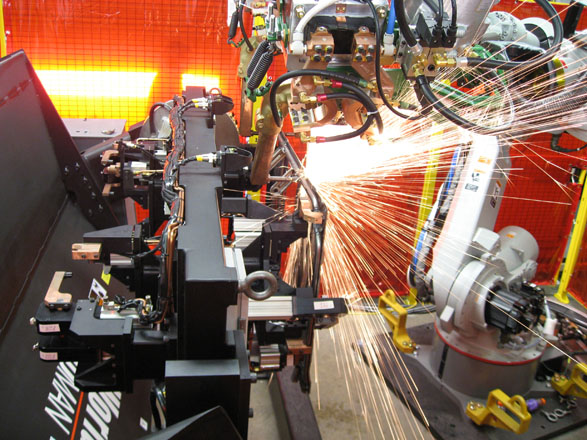Welding is one of those skills emblematic of the changing manufacturing landscape. That is a polite way of saying it is commonly described as a technique that fewer and fewer Americans have mastered or have any interest in mastering. And while indispensable and crucial when making repairs, or for custom construction, welding by hand is difficult to do even for a skilled welder. In addition, it can be dirty, it is occasionally dangerous, and the satisfaction of laying down a clean bead is hard to share.
So let a robot do it. At least, when it comes to the production line. You’ve seen those great images of sparks flying on automated automotive assembly lines where all the employees have been replaced by robotic arms that are swiveling, pivoting, and popping spot welds. In this world of welding, human artistry and skills honed after years of experimentation are replaced by programming, material selection, and statistical studies of large repeatable data sets.
In reality, stick electrode welding and resistance spot welding for repetitive body assembly don’t have much in common beyond the shared fact that they are joining metals. And robotic welding is undeniably here to stay, as the demand for enhanced feature design, improved environmental performance, and uncompromising quality—all at lower costs—has put high-speed production lines and the automation tools they leverage at the center of operations.
While robotic welding may eliminate many of the problems of stick electrode welding, it does have its challenges. The robotic resistance welding process, for example, can be responsible for inefficient production lines if the wrong electrode is used. Often, poor quality resistance welding electrodes or electrode materials that aren’t appropriate for your application will display such issues as weak or imperfect welds, improperly located welds, electrode tip sticking, and slowed cycle times.
In the world of resistance spot welding, where the workpiece is often a low conductivity metal and copper or copper alloy electrodes will likely be used, it’s easy to brush off the importance of proper electrode material properties, composition and design. That is, until you need to weld the copper on a wire harness, or an electric motor winding. In specialty cases like these where your application requires a unique combination of thermal conduction, electrical resistivity, and reactivity (to avoid alloying) you may need to think again.
In an industry where “getting the job done” means getting the job done fast, choosing the right electrodes for your production assembly is critical to success. To learn more about finding the right material for your application, download our white paper on Choosing the Proper Resistance Welding Electrode Material.






